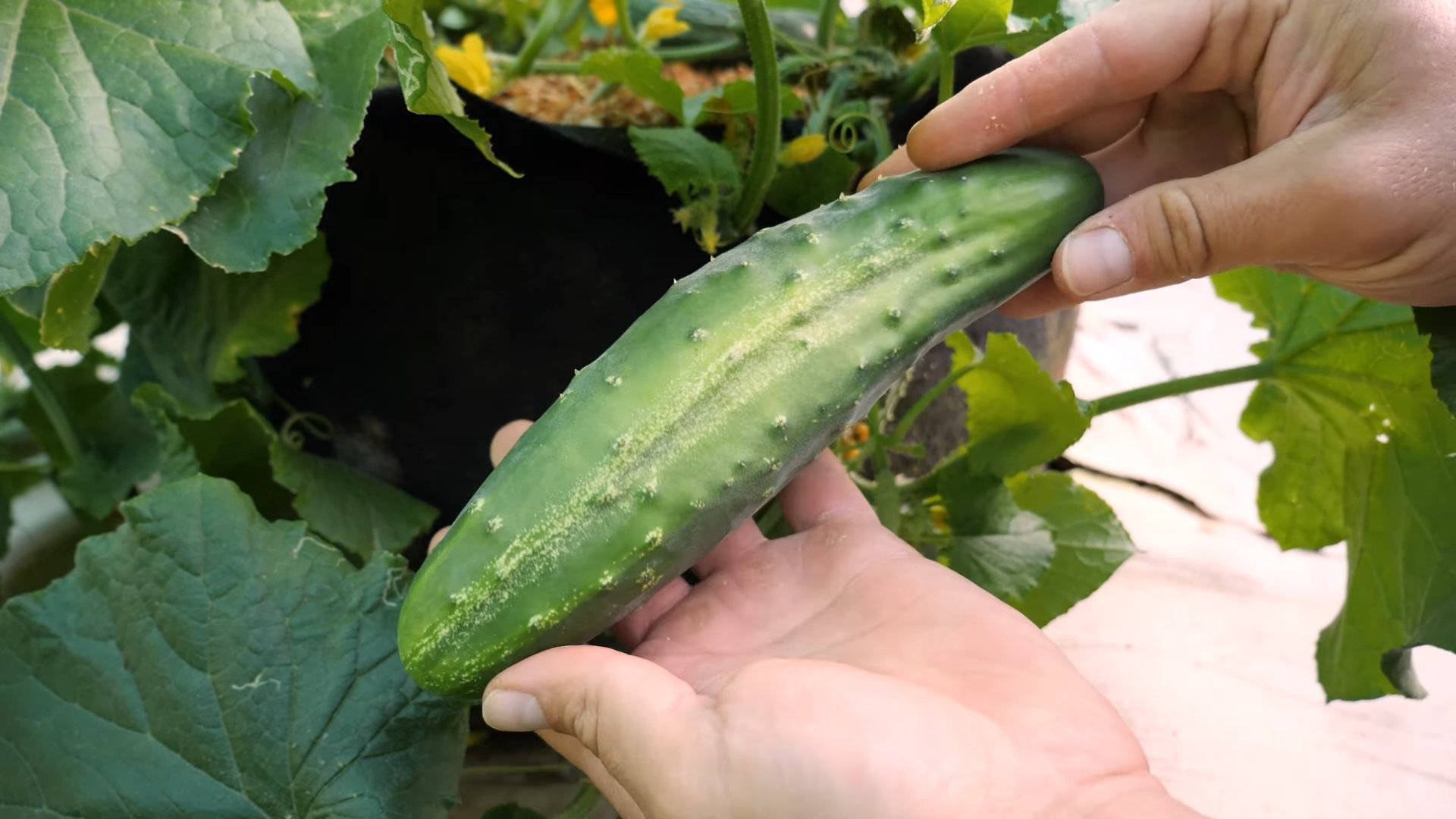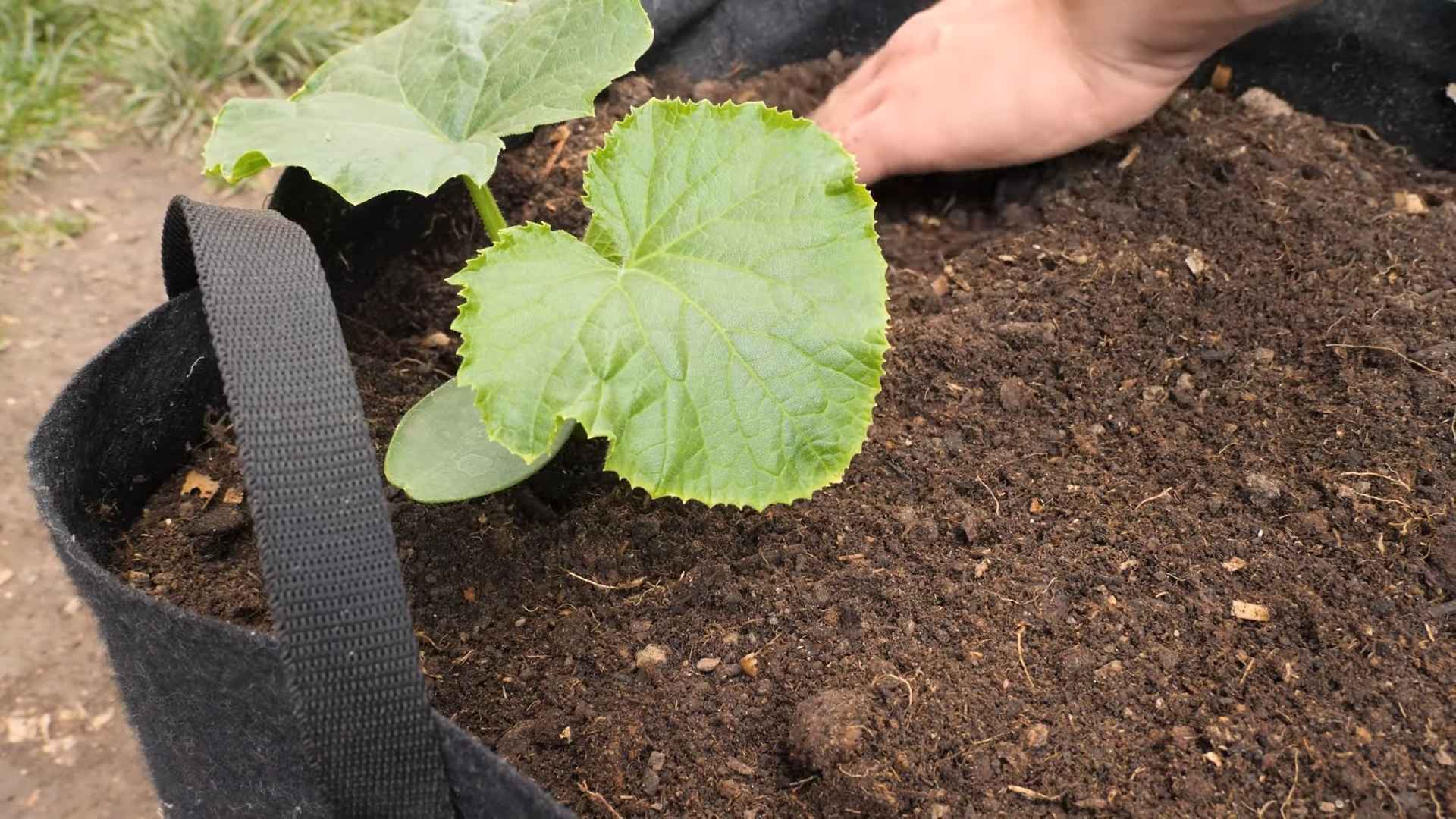Growing Cucumbers Step by Step can seem daunting, but trust me, with a few simple tricks, you’ll be harvesting crisp, delicious cucumbers from your own backyard in no time! For centuries, cucumbers have been a staple in diets around the world, dating back to ancient India. They’re not just tasty; they’re packed with nutrients and incredibly versatile in the kitchen.
Have you ever dreamed of biting into a perfectly ripe cucumber, bursting with flavor, knowing you grew it yourself? I know I have! But let’s be honest, store-bought cucumbers often lack that fresh, vibrant taste. That’s where this DIY guide comes in. We’re going to break down the process of growing cucumbers step by step, making it easy and accessible for everyone, even if you’re a complete beginner.
This isn’t just about saving money (though that’s a definite perk!). It’s about connecting with nature, enjoying the satisfaction of nurturing a plant from seed to harvest, and knowing exactly what’s going into your food. Plus, imagine the bragging rights when you serve up a salad featuring cucumbers you grew yourself! So, grab your gardening gloves, and let’s get started on this exciting journey of growing your own cucumbers!

Growing Cucumbers: A Step-by-Step Guide to a Bountiful Harvest
Okay, cucumber lovers, let’s dive into the wonderful world of growing your own crisp, refreshing cucumbers! I’m going to walk you through everything you need to know, from choosing the right variety to harvesting your delicious bounty. Get ready to enjoy the satisfaction of eating cucumbers you grew yourself!
Choosing Your Cucumber Variety
Before we get our hands dirty, let’s talk about cucumber varieties. There are a few main types, and the best one for you will depend on your space, climate, and what you want to use your cucumbers for.
* Slicing Cucumbers: These are your classic, everyday cucumbers. They have smooth, dark green skin and are perfect for salads, sandwiches, and snacking. Some popular slicing varieties include ‘Marketmore 76’, ‘Straight Eight’, and ‘Burpee Hybrid’.
* Pickling Cucumbers: These are smaller and have thicker, bumpier skin, making them ideal for pickling. ‘National Pickling’ and ‘Boston Pickling’ are reliable choices.
* Burpless Cucumbers: These are bred to have lower levels of cucurbitacin, the compound that can sometimes cause bitterness and indigestion. ‘Sweet Success’ and ‘Armenian’ (which is technically a melon, but used like a cucumber) are popular burpless options.
* Bush Cucumbers: If you’re short on space, bush cucumbers are your best bet. They grow in a compact, bush-like form, making them perfect for containers or small gardens. ‘Spacemaster’ and ‘Bush Champion’ are good choices.
Consider your climate! Some varieties are more heat-tolerant than others. Do a little research to see what grows best in your area.
Getting Started: Seeds vs. Transplants
You have two options for starting your cucumber plants: seeds or transplants.
* Seeds: Starting from seed is generally more economical, and it gives you more variety to choose from. However, it requires a bit more time and attention.
* Transplants: Buying transplants from a nursery or garden center is a quicker and easier option, especially if you’re a beginner. Just make sure the transplants look healthy and vigorous.
I personally prefer starting from seed indoors a few weeks before the last expected frost. This gives my plants a head start and protects them from early-season pests.
Starting Seeds Indoors (Optional)
If you’re going the seed route, here’s how to start them indoors:
1. Gather Your Supplies: You’ll need seed starting trays or small pots, seed starting mix (not regular potting soil!), cucumber seeds, and a spray bottle.
2. Sow the Seeds: Fill your trays or pots with seed starting mix. Make a small indentation (about 1/2 inch deep) in the center of each cell or pot. Place one or two cucumber seeds in each indentation and cover lightly with soil.
3. Water Gently: Use a spray bottle to gently moisten the soil. Avoid overwatering, which can lead to damping off (a fungal disease that kills seedlings).
4. Provide Warmth and Light: Cucumber seeds need warmth to germinate. Place your trays or pots in a warm location (around 70-80°F) or use a heat mat. Once the seedlings emerge, provide them with plenty of light. A sunny windowsill or a grow light will work well.
5. Thin the Seedlings: If you planted two seeds per cell or pot, thin them to one seedling once they have their first true leaves (the leaves that appear after the initial seed leaves). Snip off the weaker seedling at the soil line.
6. Harden Off the Seedlings: Before transplanting your seedlings outdoors, you’ll need to “harden them off.” This means gradually exposing them to outdoor conditions over a period of about a week. Start by placing them in a sheltered spot outdoors for a few hours each day, gradually increasing the amount of time they spend outside.
Preparing Your Garden Bed
Cucumbers need a sunny spot with well-drained soil. Here’s how to prepare your garden bed:
1. Choose a Sunny Location: Cucumbers need at least 6-8 hours of sunlight per day.
2. Amend the Soil: Cucumbers are heavy feeders, so it’s important to amend your soil with plenty of organic matter, such as compost or well-rotted manure. This will improve drainage, fertility, and water retention.
3. Check the Soil pH: Cucumbers prefer a slightly acidic soil pH of 6.0-6.8. You can test your soil pH with a soil testing kit and amend it accordingly.
4. Create Mounds or Rows: Cucumbers grow best on slightly raised mounds or rows. This helps with drainage and warms the soil more quickly.
Transplanting or Direct Sowing
Now it’s time to get those cucumbers in the ground!
1. Wait for Warm Weather: Cucumbers are very sensitive to frost. Wait until the danger of frost has passed and the soil has warmed up to at least 60°F before transplanting or direct sowing.
2. Transplanting Seedlings: If you started your seeds indoors, gently remove the seedlings from their trays or pots. Dig a hole that is slightly larger than the root ball. Place the seedling in the hole and backfill with soil. Water thoroughly.
3. Direct Sowing Seeds: If you’re direct sowing seeds, plant them about 1 inch deep and 2-3 inches apart. Once the seedlings emerge, thin them to about 12-18 inches apart.
4. Provide Support: Cucumbers are vines, so they need support to climb. You can use a trellis, fence, or stakes. This will help keep the fruits off the ground, prevent disease, and make harvesting easier. I personally love using a trellis – it looks great and saves space!
Caring for Your Cucumber Plants
Once your cucumber plants are in the ground, here’s how to keep them happy and healthy:
1. Water Regularly: Cucumbers need consistent moisture, especially during hot weather. Water deeply and regularly, aiming for about 1 inch of water per week. Avoid overhead watering, which can promote fungal diseases. Drip irrigation or soaker hoses are ideal.
2. Fertilize Regularly: Feed your cucumber plants every 2-3 weeks with a balanced fertilizer. You can also use a liquid seaweed or fish emulsion fertilizer.
3. Weed Regularly: Keep your garden bed free of weeds, which can compete with your cucumber plants for nutrients and water.
4. Mulch: Apply a layer of mulch around your cucumber plants to help retain moisture, suppress weeds, and regulate soil temperature. Straw, wood chips, or shredded leaves are good choices.
5. Pest and Disease Control: Keep an eye out for common cucumber pests, such as cucumber beetles, squash bugs, and aphids. You can control these pests with insecticidal soap, neem oil, or by handpicking them off the plants. Common cucumber diseases include powdery mildew and downy mildew. Prevent these diseases by providing good air circulation, avoiding overhead watering, and using disease-resistant varieties. If you spot signs of disease, treat with a fungicide.
Pollination: Ensuring a Good Harvest
Cucumbers need to be pollinated in order to produce fruit. Most cucumber varieties are monoecious, meaning they have separate male and female flowers on the same plant. The female flowers have a small cucumber-like structure at the base, while the male flowers do not.
* Attracting Pollinators: To attract pollinators to your garden, plant flowers that are attractive to bees and other beneficial insects.
* Hand Pollination (If Necessary): If you’re not seeing many bees in your garden, you may need to hand-pollinate your cucumbers. To do this, use a small paintbrush to transfer pollen from the male flowers to the female flowers. Do this in the morning, when the pollen is most viable.
Parthenocarpic Varieties: Some cucumber varieties are parthenocarpic, meaning they don’t need to be pollinated to produce fruit. These varieties are ideal for growing in greenhouses or other enclosed spaces where pollinators are scarce. ‘Diva’ and ‘Sweet Success’ are examples of parthenocarpic cucumbers.
Harvesting Your Cucumbers
The moment you’ve been waiting for! Here’s how to harvest your cucumbers:
1. Harvest at the Right Size: Harvest your cucumbers when they are the right size for their variety. Slicing cucumbers are typically harvested when they are 6-8 inches long, while pickling cucumbers are harvested when they are 3-4 inches long.
2. Use a Sharp Knife or Pruning Shears: Cut the cucumber from the vine with a sharp knife or pruning shears. Be careful not to damage the vine.
3. Harvest Regularly: Harvest your cucumbers regularly to encourage continued production. Overripe cucumbers can become bitter and seedy.
Enjoying Your Harvest
Now that you’ve harvested your

Conclusion
So, there you have it – a comprehensive guide to successfully growing cucumbers, step by step! We’ve covered everything from selecting the right variety and preparing your soil to nurturing your plants and harvesting your bountiful crop. But why is this DIY approach a must-try? Because nothing beats the taste of a freshly picked, homegrown cucumber. The crispness, the subtle sweetness, the sheer satisfaction of knowing you nurtured it from seed to table – it’s an experience you simply can’t replicate with store-bought produce.
Beyond the superior flavor, growing your own cucumbers offers a host of other benefits. You have complete control over the growing process, ensuring your cucumbers are free from harmful pesticides and chemicals. It’s also a fantastic way to connect with nature, de-stress, and learn new skills. Plus, you’ll save money in the long run, especially if you’re a frequent cucumber consumer.
But the beauty of growing cucumbers lies in its adaptability. Feel free to experiment with different varieties to find your favorites. Try pickling cucumbers for a tangy treat, or opt for burpless varieties if you’re sensitive to cucurbitacin. Consider growing them vertically on a trellis to save space and improve air circulation. You can even try companion planting with basil or marigolds to deter pests and enhance growth.
Don’t be afraid to get your hands dirty and embrace the learning process. Gardening is all about trial and error, so don’t be discouraged if you encounter a few bumps along the way. The rewards of fresh, homegrown cucumbers are well worth the effort.
We wholeheartedly encourage you to give this DIY cucumber growing method a try. Whether you have a sprawling garden or a small balcony, there’s a way to cultivate these delicious vegetables. Once you’ve harvested your first crop, we’d love to hear about your experience! Share your tips, tricks, and triumphs in the comments below. Let’s create a community of cucumber enthusiasts and inspire others to embark on their own gardening adventures. Remember, the journey of a thousand cucumbers begins with a single seed! So, grab your gardening gloves, prepare your soil, and get ready to enjoy the fruits (or rather, vegetables) of your labor. Happy growing!
Frequently Asked Questions (FAQ)
What are the best cucumber varieties to grow for beginners?
For beginners, some excellent cucumber varieties to consider are ‘Bush Champion,’ ‘Spacemaster,’ and ‘Sweet Success.’ ‘Bush Champion’ is a compact variety ideal for container gardening, while ‘Spacemaster’ is known for its disease resistance and high yields. ‘Sweet Success’ is a burpless variety with a mild flavor, making it a great choice for those sensitive to cucurbitacin, the compound that can sometimes cause bitterness in cucumbers. These varieties are generally easy to grow and produce reliable results, making them perfect for novice gardeners. Remember to check the specific growing requirements for each variety, as some may prefer slightly different conditions.
How often should I water my cucumber plants?
Cucumber plants require consistent moisture, especially during hot weather and fruit development. As a general rule, water deeply at least two to three times per week, ensuring the soil is thoroughly soaked. The best time to water is early in the morning, which allows the foliage to dry before nightfall, reducing the risk of fungal diseases. Use a soaker hose or drip irrigation to deliver water directly to the roots, minimizing water loss through evaporation and preventing the leaves from getting wet. Check the soil moisture regularly by sticking your finger about an inch into the soil. If it feels dry, it’s time to water. Adjust your watering schedule based on weather conditions and soil type. Sandy soils will drain more quickly and require more frequent watering than clay soils.
What are common pests and diseases that affect cucumber plants, and how can I prevent them?
Cucumber plants are susceptible to several pests and diseases, including aphids, cucumber beetles, squash bugs, powdery mildew, and downy mildew. To prevent these problems, start by selecting disease-resistant varieties. Practice good garden hygiene by removing any dead or diseased leaves and debris from around the plants. Encourage beneficial insects like ladybugs and lacewings, which prey on aphids and other pests. Use row covers to protect young plants from pests early in the season. For powdery mildew, ensure good air circulation around the plants and avoid overhead watering. If you notice signs of pests or diseases, treat them promptly with organic insecticides or fungicides. Neem oil and insecticidal soap are effective against many common pests, while copper-based fungicides can help control fungal diseases. Regularly inspect your plants for any signs of trouble and take action quickly to prevent problems from spreading.
How do I know when my cucumbers are ready to harvest?
The timing of cucumber harvest depends on the variety and your personal preference. Generally, cucumbers are ready to harvest when they reach the desired size and color for their specific variety. Pickling cucumbers are typically harvested when they are smaller, while slicing cucumbers are allowed to grow larger. The skin should be firm and smooth, and the color should be uniform. Avoid letting cucumbers become overripe, as they can become bitter and seedy. To harvest, use a sharp knife or pruning shears to cut the cucumber from the vine, leaving a small stem attached. Handle the cucumbers gently to avoid bruising. Harvest regularly to encourage continued production.
Can I grow cucumbers in containers?
Yes, you can absolutely grow cucumbers in containers! Choose a large container, at least 12 inches in diameter and depth, to provide enough space for the roots to grow. Use a well-draining potting mix and ensure the container has drainage holes. Select bush or compact varieties that are well-suited for container gardening. Provide a trellis or support for the vines to climb, as this will help save space and improve air circulation. Water regularly and fertilize every two to three weeks with a balanced fertilizer. Place the container in a sunny location that receives at least six to eight hours of sunlight per day. With proper care, you can enjoy a bountiful harvest of cucumbers even in a small space.
What is companion planting, and which plants are good companions for cucumbers?
Companion planting is the practice of planting different crops together to benefit each other. Some good companion plants for cucumbers include basil, marigolds, nasturtiums, dill, and radishes. Basil repels aphids and whiteflies, while marigolds deter nematodes and other soil pests. Nasturtiums attract aphids away from cucumber plants, acting as a trap crop. Dill attracts beneficial insects like ladybugs and lacewings, which prey on pests. Radishes can help break up the soil and deter cucumber beetles. Avoid planting cucumbers near aromatic herbs like sage and mint, as they can inhibit growth. By strategically planting companion plants, you can create a healthier and more productive garden.
How can I prevent my cucumbers from becoming bitter?
Bitterness in cucumbers is caused by a compound called cucurbitacin. Several factors can contribute to bitterness, including stress from inconsistent watering, high temperatures, and poor soil conditions. To prevent bitterness, ensure your cucumber plants receive consistent moisture, especially during hot weather. Provide shade during the hottest part of the day to prevent heat stress. Amend the soil with compost or other organic matter to improve drainage and fertility. Choose burpless varieties, which are bred to have lower levels of cucurbitacin. Avoid harvesting cucumbers when they are overripe, as bitterness can increase with age. If you notice a bitter taste, you can peel the cucumber and remove the ends, as cucurbitacin is concentrated in the skin and stem end.





Leave a Comment